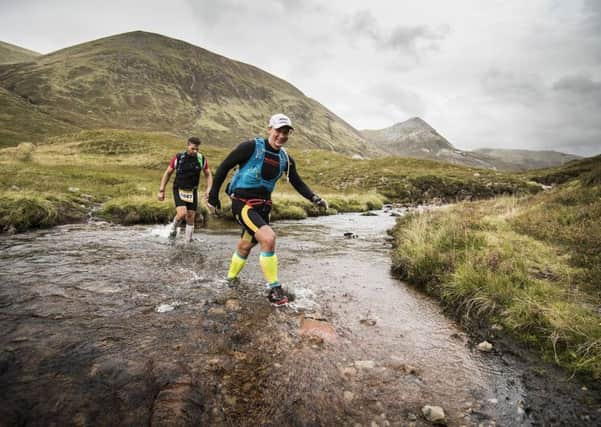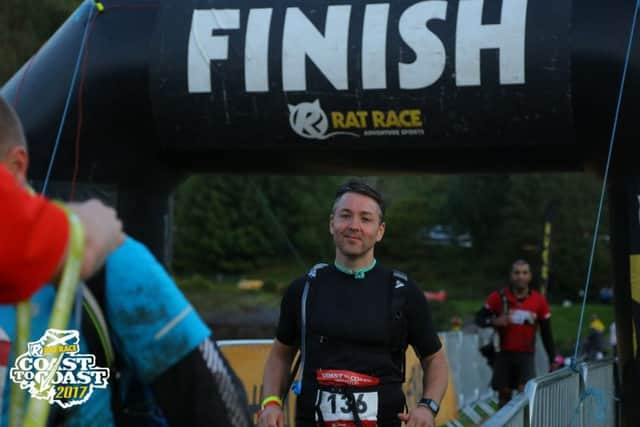How to survive Rat Race Coast to Coast


But sometimes, if you’re anything like me, you need to be reminded that there is more to life than sitting behind a desk for 40 hours a week.
That’s what brought me to Rat Race’s infamous Coast to Coast challenge.
Advertisement
Hide AdAdvertisement
Hide AdThe world of madcap challenges and fitness tests is rammed with great events that can reawaken the sleeping adventurer inside us all and this one, from one of the country’s leading outdoor pursuit brands, is an absolute corker.


A tweak on the classic English coast to coast, this one sees more than 1,000 entrants run, cycle and kayak 105 miles across the Scottish highlands.
It sounds epic and it is taking in some of the most wild locations in the world from running along the windswept beaches of Nairn and cycling from Macbeth’s 600-year-old castle to running along Britain’s biggest mountain range to kayaking in the shadows of Glen Coe.
You can take on the challenge in one or two days. I (naively) opted for the ‘expert’ one-day version and what a test it was.
Advertisement
Hide AdAdvertisement
Hide AdA seven-mile trail run from Nairn beach, where Charlie Chaplin used to holiday, kicked off proceedings at 6.45am on a cloudy September morning. The narrow, picturesque trails eased the 250 or so ‘experts’ attempting it in one day into the challenge. The 900+ two-day competitors would be set off a little later.


A wasp sting on my leg wasn’t an ideal start but it was far too early in the day to start moaning just yet. Things would get a lot tougher.
After an hour or so, I made it to Cawdor Castle, famous for its connections to MacBeth, where our bikes awaited ahead of a 48-mile road cycle to Fort Augustus.
The route undulated through the countryside but there were no really worrying climbs until I got to the long, steady ascent of the B862 near Loch Ness. It’s a brute topping out at more than 1,100ft but the pictures at the top were worth the effort.
Advertisement
Hide AdAdvertisement
Hide AdFrom there, it was a long sweeping descent into the pretty town of Fort Augustus, on the banks of the Caledonian Canal.
This is where those taking on the challenge in two days camp overnight, but for us one-dayers we were only half way.
I stopped for a sandwich and to call my wife to brag about my good progress. (What do they say about pride before a fall?)
From the Fort Augustus locks, we headed off road for 20 miles or so. Following the path of the canal, it was pretty flat giving me chance to gear up for the final brutal run.
Advertisement
Hide AdAdvertisement
Hide AdAfter the off -oad section, there was another dozen or so miles cycling along the roads to Fort William before the torturous 14-mile run over the West Highland Way.
This is by far the most difficult and memorable section of the event.
For safety reasons, we had to leave Fort William before 4pm to have any chance of getting to the next checkpoint by the 7.30pm cut off put in place by the organisers.
I got out onto the run by 3.10pm, thinking I’ve got plenty of time in the bank, but my tired legs had other ideas as I tried to drag them across Glen Nevis, in the shadows of Britain’s biggest mountain.
Advertisement
Hide AdAdvertisement
Hide AdWe crossed through rivers and muddy bogs as we trekked through landscapes you’ve probably seen before in films like Skyfall and Highlander.
It is utterly breath-taking but this is not an easy trail and time ebbed away faster than I’d like.
My elation was shortlived when I made it to the final summit and realised sliding down through the mud was as treacherous as anything that came before.
In the end, I made it to the final kayak section with just eight minutes to spare.
Advertisement
Hide AdAdvertisement
Hide AdI was quickly paired up with another solo competitor and pushed into Loch Leven to kayak one kilometre across to the finish.
After more than 13 hours on my feet, I made it 105 miles across the Highlands in a day.
It’s a strange feeling of exhaustion and elation when you cross the finish line and a medal is slung around your neck and a cup of soup into your hand.
It’s only in the days that follow that you really get a sense of what you’ve done, particularly if you’ve never done anything like it before.
Advertisement
Hide AdAdvertisement
Hide AdYou’d walk a little taller if your hamstrings weren’t so sore.
I used to think events like these were for other people, fitness freaks and adrenaline junkies.
And of course they are. But they are for the rest of us too.
With a bit of training and a heap of determination anyone can get to the finish line. I am testament to that.
Advertisement
Hide AdAdvertisement
Hide AdIt might take over your life and you’ll find yourself training on cold, wet Sunday mornings instead of having a lie in.
And it certainly isn’t a cheap hobby. Entry to this event alone is at least £200 (depending when you book) and then are all the extras you don’t think about – kit, transportation, hotels, etc...
But is it worth it? Absolutely, if only for the fact that when you go back to work for one of those 40-hour weeks you won’t be left wondering if you’re capable of more – you’ll know it.